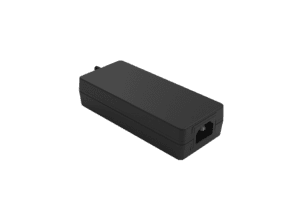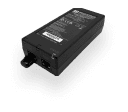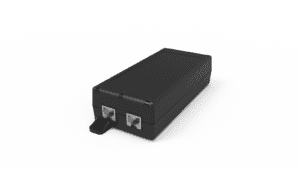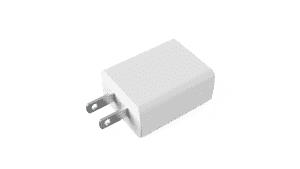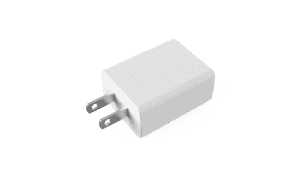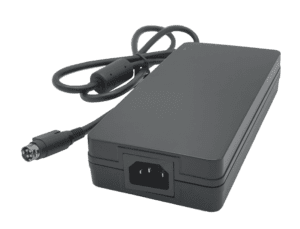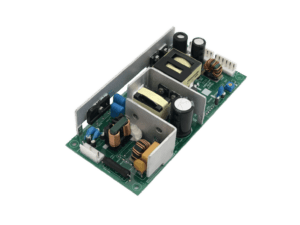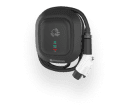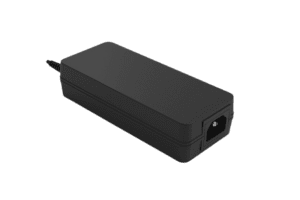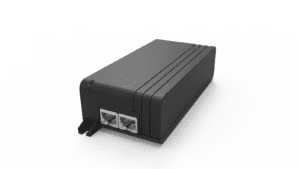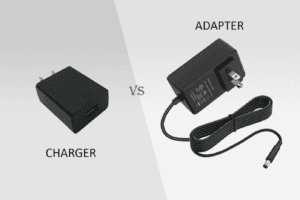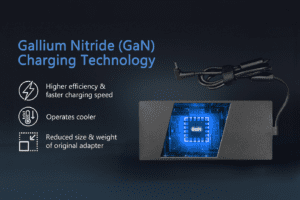BLOG
Smart Robot Charging Station Supplier: How to Integrate CANBus Analytics for Predictive Maintenance
Table of contents

Why Predictive Maintenance Is the Next Frontier in Smart Robotics
As industrial robots become more autonomous, mobile, and mission-critical, downtime is no longer acceptable. Traditional maintenance models—based on usage hours or calendar intervals—fail to capture real-time wear, abnormal conditions, or emerging component issues. That’s where predictive maintenance, powered by real-time analytics and communication protocols like CANBus, comes in.
Predictive maintenance enables charging stations and fleet managers to monitor robots in the field and proactively service them before faults occur. This approach uses live data from the robot’s battery management system (BMS), motors, sensors, and environmental inputs to identify patterns of stress, degradation, or inefficiency.
In smart factories, warehouses, and logistics hubs, integrating predictive maintenance through charging docks gives OEMs and operators a data-driven advantage. Charging sessions are no longer just for energy—they’re for diagnostics, trend analysis, and lifecycle planning.
Top Features
- Real-time data streaming via CANBus from robot to dock
- Monitoring of battery cycles, temperatures, fault flags, and charging efficiency
- Historical data logging for trend-based servicing
Top Benefits
- Reduces unexpected failures and costly downtime
- Increases the lifespan of batteries, motors, and drive systems
- Enables smarter service scheduling and fewer unnecessary repairs
Best Practices
- Integrate diagnostics routines into every docking cycle
- Store and process charging telemetry over time for trend recognition
- Use anomaly detection algorithms to trigger alerts before failure occurs
Predictive maintenance isn’t just about sensors—it’s about using your charging infrastructure as a diagnostic gateway to smarter robotics.
Understanding CANBus: The Backbone of Robot-Dock Communication
The Controller Area Network (CANBus) protocol is the industry standard for internal communication in robotics, industrial automation, and electric vehicles. It enables fast, fault-tolerant, and real-time data exchange between subsystems—making it ideal for connecting smart docks and robots for maintenance analytics.
In a robot-charging context, CANBus is used to:
- Transmit battery health and charging state
- Receive temperature, voltage, and current readings in real time
- Share diagnostic flags from sensors or embedded controllers
- Authenticate connection and command charging profiles
Unlike Ethernet or Wi-Fi, CANBus is designed for high-reliability and deterministic communication, meaning data arrives when it should—even in electrically noisy environments like factories or loading docks.
CANBus messages are sent in frames containing identifiers, error-checking data, and values. These can be parsed by the dock-side controller or forwarded to a centralized maintenance server.
Top Features
- Multi-node communication over two-wire twisted pair
- Fast real-time polling of critical system health parameters
- Built-in error detection, retransmission, and bus arbitration
Top Benefits
- Guarantees reliable data exchange in harsh industrial settings
- Enables dock-side analytics without taxing robot-side compute
- Scales across robot models and mixed fleets with minimal overhead
Best Practices
- Use 11-bit or 29-bit CAN ID structures based on data complexity
- Implement interrupt-based handlers for priority signals
- Include watchdogs and fallback protocols to maintain system integrity
CANBus isn’t just for data—it’s a foundation for creating smart, connected robotic infrastructure.
Designing Charging Docks with CANBus Integration Capabilities
A smart robot charging station must be more than a power outlet—it must function as a diagnostic hub. Integrating CANBus capability into charging stations allows the dock to serve as a live data reader, capturing system health information every time a robot connects.
To do this, each dock should include:
- A CAN transceiver and microcontroller to parse messages
- Isolated bus connections to protect both dock and robot electronics
- Real-time data logging and optional wireless backhaul
The dock may also need to initiate handshake protocols, trigger self-tests, or request fault logs from the robot’s onboard systems. This allows operators to catch early signs of wear—like increased internal battery resistance or repeated overheating—and act before performance degrades or failures occur.
Some advanced docks may include edge processing to evaluate:
- Charge/discharge rate variance
- Peak current anomalies
- Battery imbalance
- High operating temperature history
Top Features
- Built-in CAN interface with message filtering and timestamping
- Flash storage for local data buffering
- GPIO and status LEDs for field diagnostics
Top Benefits
- Turns every charge session into a health-check opportunity
- Eliminates the need for separate diagnostic visits or handheld tools
- Supports real-time alerts to maintenance teams
Best Practices
- Integrate with cloud dashboards via MQTT or REST APIs
- Store dock-side logs in standardized CSV or JSON formats
- Perform batch analysis using ML-based anomaly detection tools
Smart charging stations are the natural interface between power, control, and robotic intelligence—and CANBus makes them even smarter.
CLIENT'S QUOTE
"Phihong’s PoE solutions have made a huge difference for us! Our network runs more efficiently, and we’ve seen real cost savings. We couldn’t be happier!"
What Data Should Be Collected for Predictive Maintenance?
The value of predictive maintenance depends on the quality and depth of the data collected. While there’s no one-size-fits-all answer, a robust smart charging dock should be configured to collect:
- Battery data: SoC (State of Charge), voltage, temperature, current, charge cycles, internal resistance
- Charge session data: Duration, start/end time, peak current, average power, charge efficiency
- Motor/sensor data (if exposed): Drive motor faults, sensor errors, controller restarts
- Environmental data: Ambient temperature, humidity (if supported)
These data points help generate KPIs such as:
- Charge cycle consistency
- Time-to-full degradation trends
- Elevated heat generation over time
- Failures triggered under load
Over weeks or months, these logs form device-specific performance profiles, enabling long-term predictions like “this robot’s battery will degrade below 70% capacity in 6 weeks” or “this motor shows signs of encoder failure after every 20th cycle.”
Top Features
- Per-session telemetry logging
- Trend analysis algorithms or cloud export
- Fault-event tagging
Top Benefits
- Moves service strategy from reactive to proactive
- Reduces labor by scheduling service only when needed
- Increases uptime and ROI for every robot in the fleet
Best Practices
- Normalize data across robot types for fleet-level analytics
- Use color-coded dashboards to highlight emerging problems
- Integrate alerts via SMS, email, or app push notifications
When you collect the right data consistently, every charging dock becomes a source of operational insight.
Fleet Management Integration: Closing the Loop Between Charging and Service
Collecting data is only the beginning. To enable real predictive maintenance, charging docks must integrate with fleet management software (FMS) or robot control platforms to turn insights into action. The FMS serves as the decision-making layer that routes robots to docks, flags maintenance tickets, or adjusts mission schedules based on charging and health data.
A full integration includes:
- Syncing dock-side telemetry with robot task logs
- Sending alerts when thresholds are breached (e.g., slow charge rate, high battery temp)
- Creating scheduled maintenance tickets automatically
- Prioritizing available docks based on battery urgency
With APIs or middleware bridges (e.g., ROS2 integration), charging station telemetry becomes a real-time stream of robot health data, actionable at the system level.
This allows operators to:
- Preempt failures by grounding robots before faults occur
- Balance energy demand across multiple chargers
- Track component degradation trends across robot generations
Top Features
- FMS API connectors or JSON export formats
- Customizable alert thresholds
- Fleet-level analytics dashboards
Top Benefits
- Automates service workflows with real-time data
- Increases robot availability during peak production windows
- Enables smarter energy and task scheduling
Best Practices
- Integrate charging data with WMS/MES if used
- Use tags or profiles to group robots by use case or charge behavior
- Archive charge session logs for warranty and post-mortem review
The best charging system isn’t just smart—it’s fleet-aware and fully integrated.
How Phihong USA Supports Smart Charging With Predictive Analytics
Phihong USA delivers smart power systems for AMRs, AGVs, industrial robots, and collaborative mobile platforms. Our charging docks are engineered not just for performance—but for intelligence, safety, and full integration with robot analytics systems.
We offer:
- High-efficiency DC fast chargers (200 W to 2 kW)
- CANBus-ready firmware for BMS and telemetry communication
- Modular docking stations with programmable voltage/current
- Smart data-logging firmware and edge analytics support
- Secure API endpoints for cloud or FMS integration
- Pre-certified modules for UL, CE, and EMC compliance
Whether you’re developing predictive maintenance into your platform for the first time or scaling an existing fleet across sites, Phihong provides the tools, firmware, and engineering collaboration to power your next-gen robotics infrastructure.
Connect with our team at www.phihong.com or email usasales@phihongusa.com for custom product development or integration support.

Contact Our Team Today!
Our dedicated sales team and international partners are prepared to support you with your latest projects and initiatives globally.
Explore More with Phihong USA
As we conclude our exploration of PoE technology, it’s evident how these innovations are streamlining power and data integration across various industries. Phihong USA stands at the forefront of this technological advancement, offering a diverse range of power solutions designed to meet the evolving needs of modern industries.
Phihong USA’s extensive product lineup includes:
- Power over Ethernet (PoE) Solutions: Delivering reliable power and data transmission over a single cable, ideal for simplifying network installations and reducing costs.
- AC/DC Adapters and Power Supplies: From compact adapters to industrial-grade power supplies, Phihong provides solutions that ensure efficiency and reliability in various applications.
- Battery Chargers: Customizable chargers for lithium-ion and lead-acid batteries, supporting a wide range of power requirements for mobility and industrial applications.
- Medical Power Supplies: Specialized power solutions designed to meet the stringent requirements of the healthcare industry, ensuring safety and reliability.
Phihong USA is committed to innovation and excellence, continually developing products that meet the highest standards of performance and reliability. Their global reach and dedication to customer support make them a trusted partner in powering the future.
Here are some useful links to explore Phihong USA’s offerings further and bring in new potential clients:
Visit Phihong USA to discover how their advanced power solutions can support your business needs. Whether you’re looking to upgrade your network, or find reliable power supplies, Phihong USA has you covered.
By choosing Phihong USA, you’re partnering with a leader in power technology, ensuring your operations run smoothly and efficiently with top-tier power solutions. Contact Us today!
What Data Should Be Collected for Predictive Maintenance?
The value of predictive maintenance depends on the quality and depth of the data collected. While there’s no one-size-fits-all answer, a robust smart charging dock should be configured to collect:
- Battery data: SoC (State of Charge), voltage, temperature, current, charge cycles, internal resistance
- Charge session data: Duration, start/end time, peak current, average power, charge efficiency
- Motor/sensor data (if exposed): Drive motor faults, sensor errors, controller restarts
- Environmental data: Ambient temperature, humidity (if supported)
These data points help generate KPIs such as:
- Charge cycle consistency
- Time-to-full degradation trends
- Elevated heat generation over time
- Failures triggered under load
Over weeks or months, these logs form device-specific performance profiles, enabling long-term predictions like “this robot’s battery will degrade below 70% capacity in 6 weeks” or “this motor shows signs of encoder failure after every 20th cycle.”
Top Features
- Per-session telemetry logging
- Trend analysis algorithms or cloud export
- Fault-event tagging
Top Benefits
- Moves service strategy from reactive to proactive
- Reduces labor by scheduling service only when needed
- Increases uptime and ROI for every robot in the fleet
Best Practices
- Normalize data across robot types for fleet-level analytics
- Use color-coded dashboards to highlight emerging problems
- Integrate alerts via SMS, email, or app push notifications
When you collect the right data consistently, every charging dock becomes a source of operational insight.
Fleet Management Integration: Closing the Loop Between Charging and Service
Collecting data is only the beginning. To enable real predictive maintenance, charging docks must integrate with fleet management software (FMS) or robot control platforms to turn insights into action. The FMS serves as the decision-making layer that routes robots to docks, flags maintenance tickets, or adjusts mission schedules based on charging and health data.
A full integration includes:
- Syncing dock-side telemetry with robot task logs
- Sending alerts when thresholds are breached (e.g., slow charge rate, high battery temp)
- Creating scheduled maintenance tickets automatically
- Prioritizing available docks based on battery urgency
With APIs or middleware bridges (e.g., ROS2 integration), charging station telemetry becomes a real-time stream of robot health data, actionable at the system level.
This allows operators to:
- Preempt failures by grounding robots before faults occur
- Balance energy demand across multiple chargers
- Track component degradation trends across robot generations
Top Features
- FMS API connectors or JSON export formats
- Customizable alert thresholds
- Fleet-level analytics dashboards
Top Benefits
- Automates service workflows with real-time data
- Increases robot availability during peak production windows
- Enables smarter energy and task scheduling
Best Practices
- Integrate charging data with WMS/MES if used
- Use tags or profiles to group robots by use case or charge behavior
- Archive charge session logs for warranty and post-mortem review
The best charging system isn’t just smart—it’s fleet-aware and fully integrated.
How Phihong USA Supports Smart Charging With Predictive Analytics
Phihong USA delivers smart power systems for AMRs, AGVs, industrial robots, and collaborative mobile platforms. Our charging docks are engineered not just for performance—but for intelligence, safety, and full integration with robot analytics systems.
We offer:
- High-efficiency DC fast chargers (200 W to 2 kW)
- CANBus-ready firmware for BMS and telemetry communication
- Modular docking stations with programmable voltage/current
- Smart data-logging firmware and edge analytics support
- Secure API endpoints for cloud or FMS integration
- Pre-certified modules for UL, CE, and EMC compliance
Whether you’re developing predictive maintenance into your platform for the first time or scaling an existing fleet across sites, Phihong provides the tools, firmware, and engineering collaboration to power your next-gen robotics infrastructure.
Connect with our team at www.phihong.com or email sales@phihongusa.com for custom product development or integration support.

